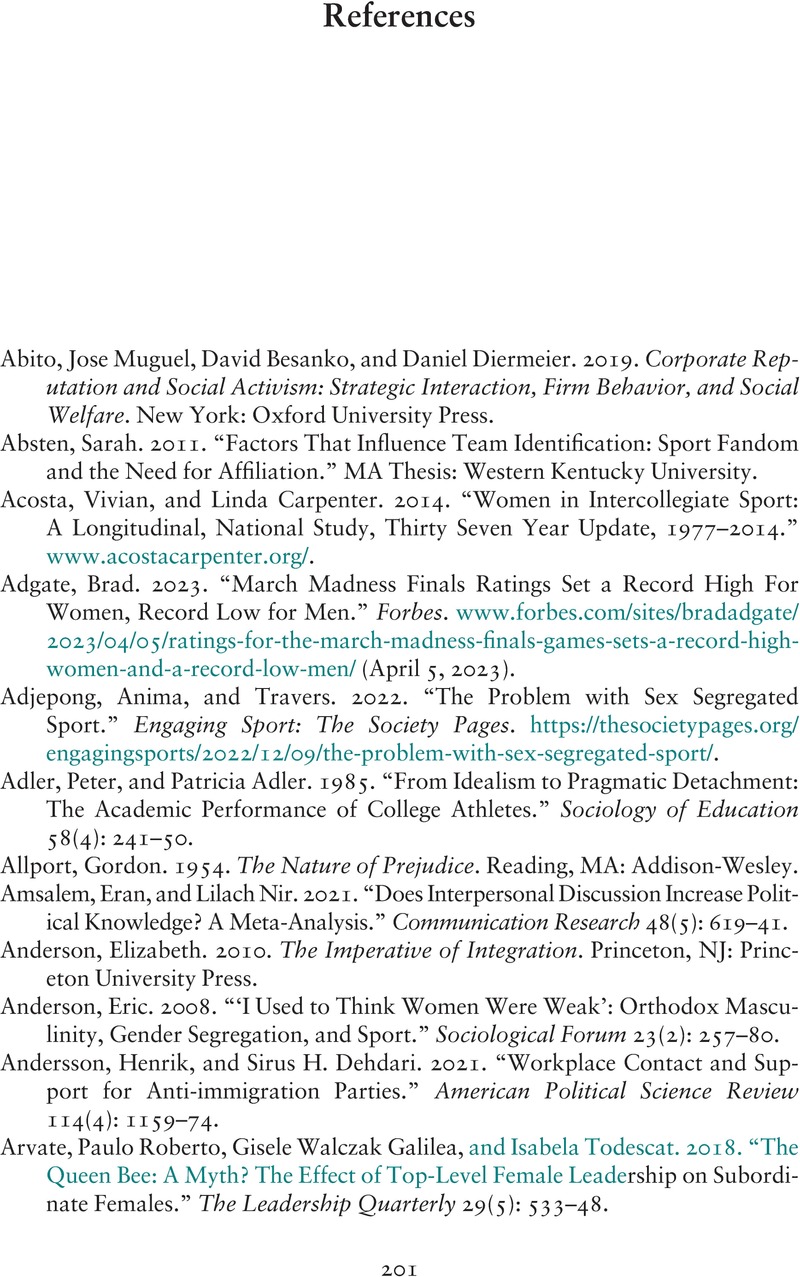Book contents
- Equality Unfulfilled
- Cambridge Studies in Gender and Politics
- Equality Unfulfilled
- Copyright page
- Dedication
- Contents
- Figures
- Tables
- Preface
- Acknowledgments
- 1 Gender Equality in College Athletics
- 2 Using Survey Data to Study Policy Support
- 3 Student-Athlete Contact and Policy Support
- 4 Organizational Culture and Policy Support
- 5 The Public, Fans, and Policy Support
- 6 Gender Equality in College Sports and Beyond
- References
- Index
- References
References
Published online by Cambridge University Press: 06 July 2023
- Equality Unfulfilled
- Cambridge Studies in Gender and Politics
- Equality Unfulfilled
- Copyright page
- Dedication
- Contents
- Figures
- Tables
- Preface
- Acknowledgments
- 1 Gender Equality in College Athletics
- 2 Using Survey Data to Study Policy Support
- 3 Student-Athlete Contact and Policy Support
- 4 Organizational Culture and Policy Support
- 5 The Public, Fans, and Policy Support
- 6 Gender Equality in College Sports and Beyond
- References
- Index
- References
Summary

- Type
- Chapter
- Information
- Equality UnfulfilledHow Title IX's Policy Design Undermines Change to College Sports, pp. 201 - 234Publisher: Cambridge University PressPrint publication year: 2023

